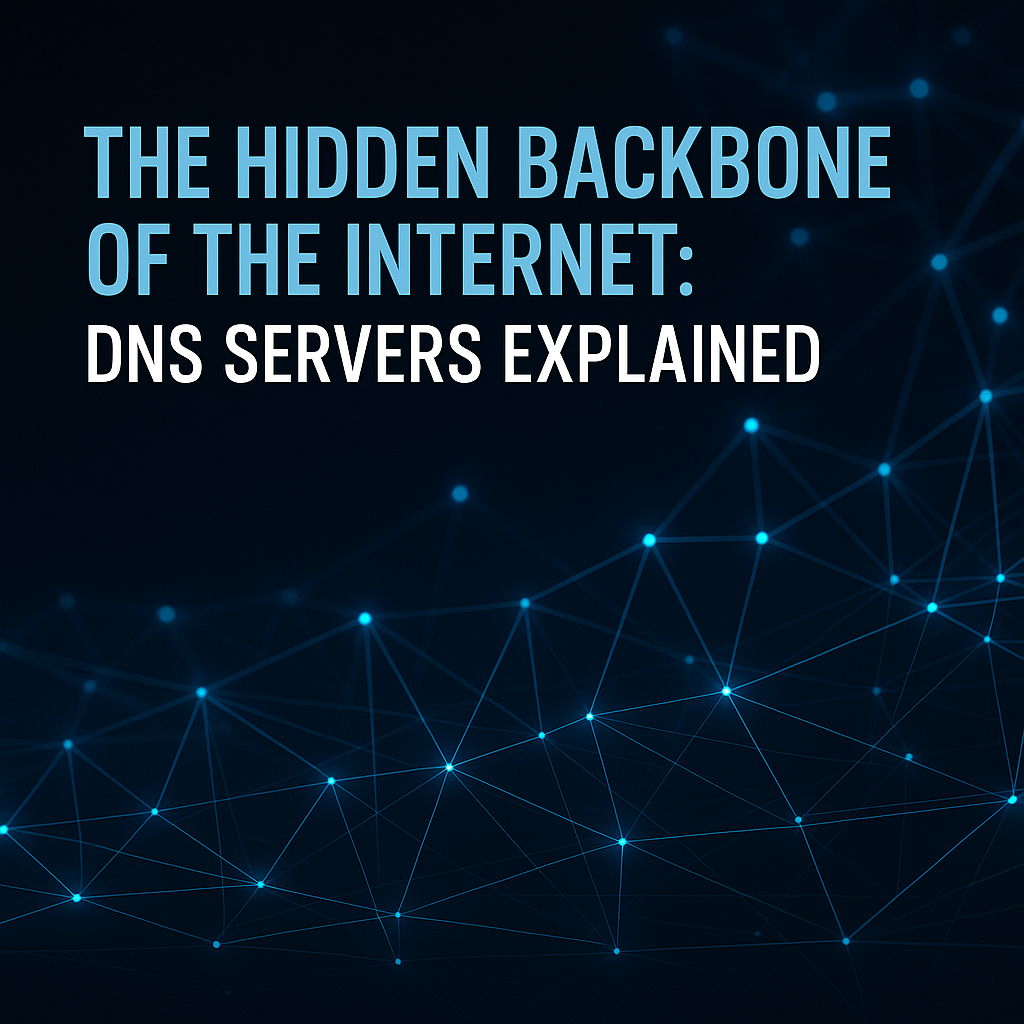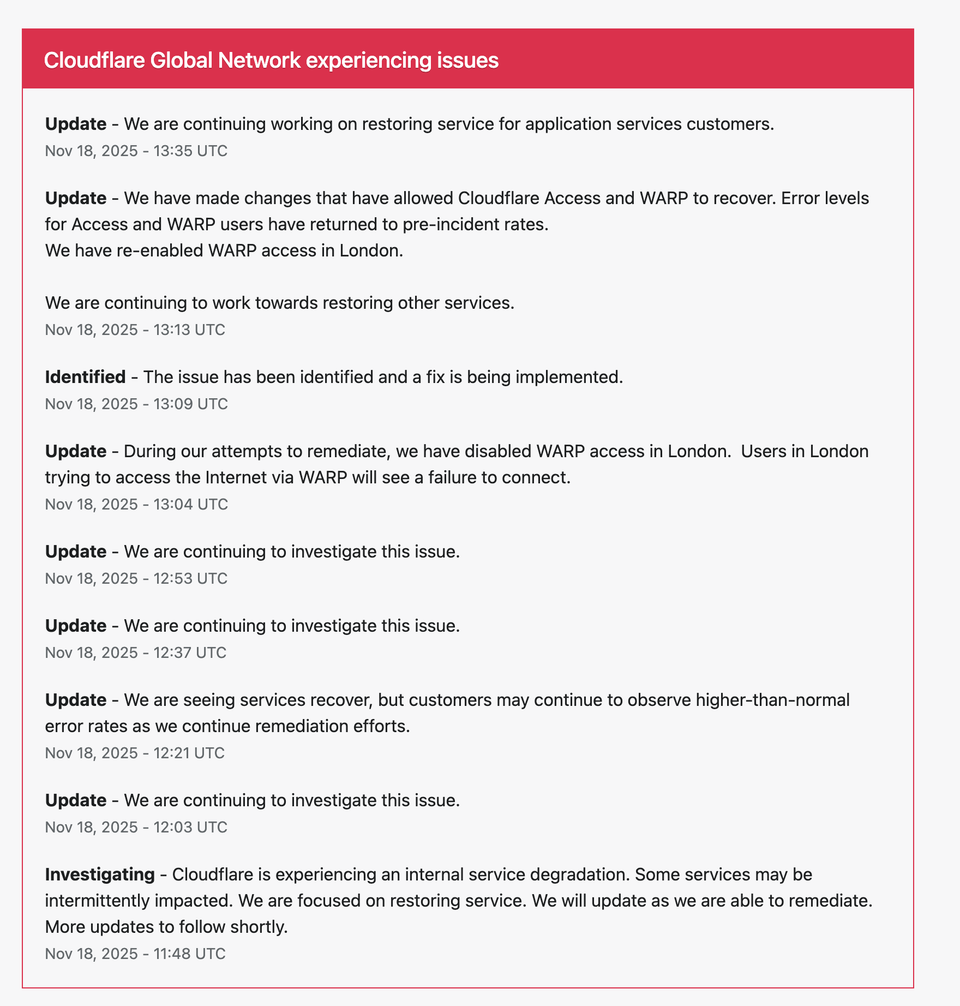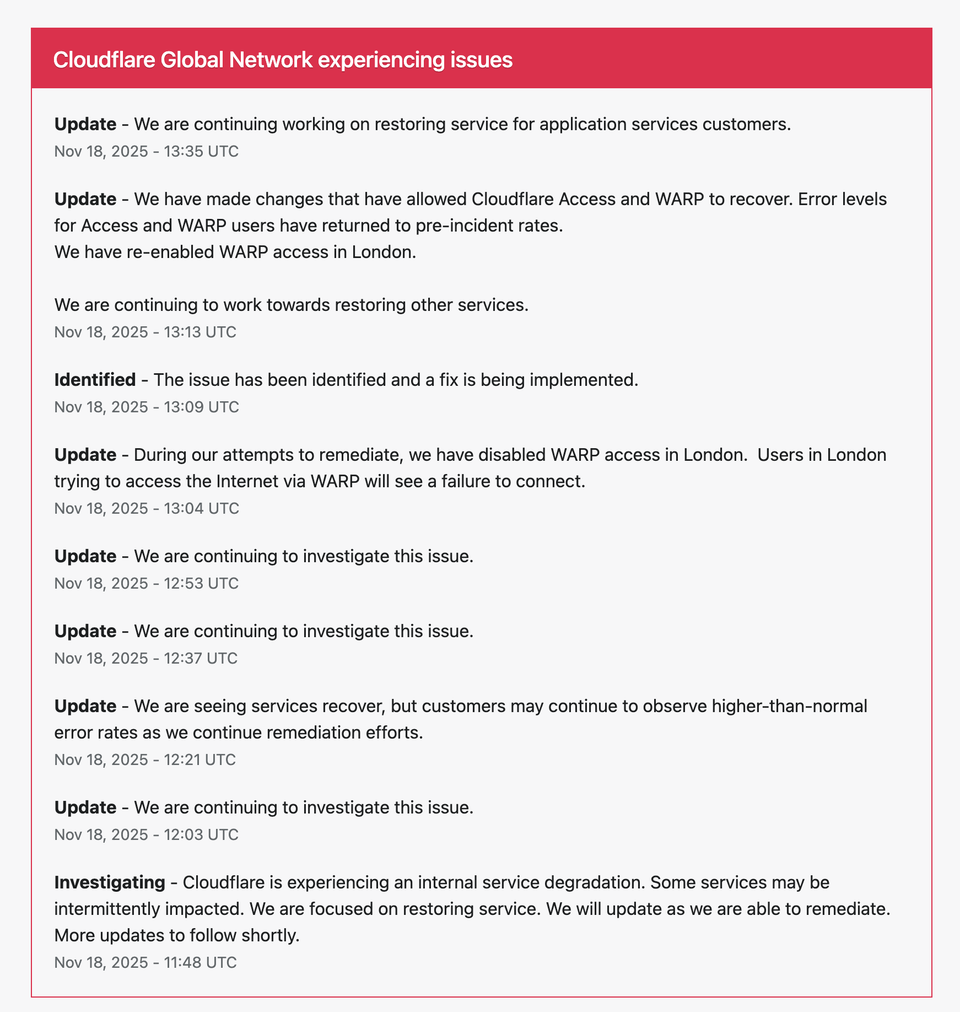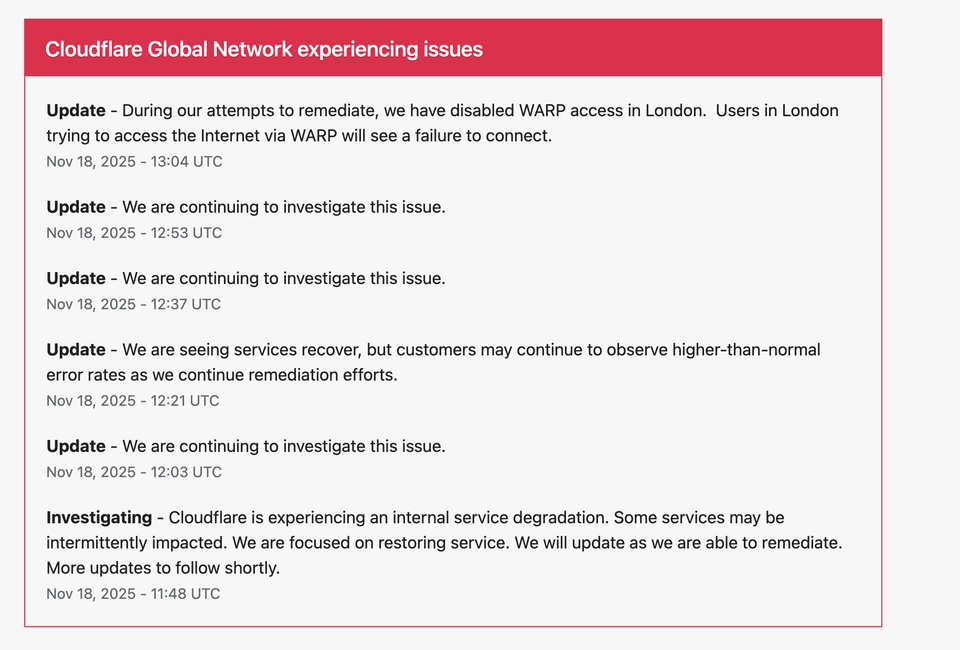🧭 The Hidden Backbone of the Internet: Why DNS Servers Matter More Than You Think
DNS is the invisible force that keeps the internet human-friendly. It translates names into numbers, connects billions of users, and powers every web request you make. Here’s why understanding DNS servers is critical for every IT administrator.

When you type a website address into your browser, it feels instant — the page loads, the connection works, and everything seems simple. But beneath that simplicity lies one of the most critical systems keeping the internet alive: DNS, the Domain Name System.
It’s the hidden translator of the web — turning human-friendly names like example.com into machine-friendly IP addresses like 93.184.216.34.
Without DNS, the modern internet wouldn’t just be slower — it would be unusable.
This article explores how DNS servers work, why they’re essential, how they’re structured, and why every system administrator should treat them with the same care as firewalls, routers, and backups.
🌐 What Exactly Is DNS?
At its core, DNS (Domain Name System) is a distributed database that maps domain names to IP addresses. It’s what allows us to access websites using readable names instead of numerical IPs.
When you type a domain like dargslan.com, your device doesn’t know where that is. So it sends a DNS query to find the corresponding IP address. The DNS system then responds with the right destination so your browser can connect.
You can think of DNS as the phonebook of the internet — except it’s global, decentralized, constantly updating, and handles billions of requests every second.
⚙️ The DNS Lookup Process (Step by Step)
Every time you load a website, a series of lightning-fast steps happen in the background. Here’s the journey of a typical DNS query:
1️⃣ Browser Cache Check
Your browser first checks if it already knows the IP address of the domain from a previous visit. If yes, no lookup is needed.
2️⃣ Operating System Cache
If the browser doesn’t know, it asks your OS. The OS keeps a small local DNS cache too.
3️⃣ Recursive Resolver
If the IP isn’t cached, the query goes to a recursive resolver — usually provided by your ISP or a public DNS like Google (8.8.8.8) or Cloudflare (1.1.1.1).
4️⃣ Root Name Servers
If the resolver doesn’t know the answer, it asks one of the 13 global root servers. These are maintained by organizations like Verisign and ICANN.
5️⃣ TLD Name Servers
The root server directs the resolver to a Top-Level Domain (TLD) server — e.g., .com, .org, .net.
6️⃣ Authoritative Name Server
Finally, the TLD server points to the domain’s authoritative name server — the one that holds the actual DNS records.
7️⃣ Response Returned
The authoritative server sends the IP address back through the chain → resolver → OS → browser → your screen.
All this happens in under 200 milliseconds.
🧱 The Key Components of DNS Infrastructure
DNS isn’t one server. It’s a network of thousands of systems working together, each with a specific job.
1. Recursive Resolvers
They act as the middleman — finding the data on your behalf.
Examples: Cloudflare DNS, Google DNS, Quad9.
2. Root Name Servers
These are the “entry points” to the global DNS. There are 13 logical root servers (with over 1,000 instances globally).
3. TLD Servers
They manage all domains under a specific top-level domain (like .com, .net, .org).
4. Authoritative Name Servers
These are where the actual domain records live.
For example, if you own dargslan.com, your hosting provider’s DNS servers store those records.
Each of these layers forms a hierarchical chain of trust that keeps the internet navigable.
🛡️ The Security Side of DNS
DNS is powerful — and because of that, it’s also a prime target for attacks.
Common threats include:
- DNS Spoofing / Cache Poisoning: Injecting false DNS data to redirect traffic.
- DNS Hijacking: Modifying DNS configurations to send users to malicious servers.
- DDoS Attacks on DNS Infrastructure: Overwhelming DNS servers with traffic to take services offline.
The solution? DNSSEC (DNS Security Extensions).
DNSSEC adds digital signatures to DNS responses, ensuring authenticity and preventing tampering.
It’s like HTTPS — but for your domain name.
Yet, despite being available for years, DNSSEC adoption remains below 40%. Many organizations skip it because of complexity or lack of awareness — until they suffer a DNS compromise.
🚀 Performance and Redundancy
DNS isn’t just about connecting domains — it’s about connecting fast and reliably.
Modern DNS servers use:
- Geo-routing: Directing users to the nearest server.
- Load balancing: Distributing traffic between multiple endpoints.
- Caching: Storing frequent queries for faster responses.
- Anycast networking: Using multiple servers worldwide to handle requests under one IP.
If your DNS goes down, your entire business goes offline — even if your web servers are healthy. That’s why redundancy is critical.
Best practice:
Use at least two DNS providers (e.g., Cloudflare + Google) or configure primary + secondary authoritative servers.
It’s like having a spare tire for your network — you hope you’ll never need it, but you’ll be thankful when you do.
🧠 Why IT Administrators Must Understand DNS
Many system administrators focus heavily on firewalls, storage, or virtualization — but DNS quietly controls everything.
It’s the first and last step in every network transaction.
Here’s why mastering DNS makes you a stronger admin:
1️⃣ You troubleshoot faster.
DNS problems often masquerade as “network” or “server” issues.
Knowing how to trace a query saves hours.
2️⃣ You design more resilient infrastructure.
Proper TTL settings, caching policies, and failovers prevent downtime.
3️⃣ You enhance security posture.
DNS filtering, DNSSEC, and blocking malicious domains stop attacks early.
4️⃣ You earn trust.
When everything “just works,” users think it’s magic.
Admins know — it’s DNS done right.
💬 Common DNS Misconceptions
“DNS is simple.”
It’s not. The core idea is simple, but scaling, caching, and securing it across global infrastructure is an art.
“I can ignore DNS; my hosting handles it.”
Until your provider misconfigures a record, and your emails vanish into the void.
“Changing DNS is instant.”
Nope — DNS propagation can take hours, even days, depending on TTL (Time To Live) values and regional caching.
🧩 The Human Side of DNS
DNS administrators rarely get credit.
When DNS works, nobody notices.
When it fails — everyone notices.
It’s an invisible layer of trust and reliability, maintained by engineers who keep the web functioning quietly behind the scenes.
If you’ve ever solved a DNS issue at 2 AM,
you know it’s not just about servers — it’s about resilience.
🔐 The Future of DNS
The evolution of DNS is ongoing.
With technologies like DNS over HTTPS (DoH) and DNS over TLS (DoT), privacy is becoming as important as performance.
These protocols encrypt DNS queries, protecting users from surveillance and manipulation.
We’re moving toward a world where DNS is not only fast and accurate but also secure and private by design.
⚡ Quick Checklist for Every IT Administrator
✅ Use multiple DNS providers (redundancy).
✅ Enable DNSSEC wherever possible.
✅ Monitor TTL and caching behavior.
✅ Implement logging and query analytics.
✅ Educate users about DNS-based phishing attacks.
✅ Document your DNS architecture.
You can’t protect what you don’t understand —
and you can’t troubleshoot what you don’t monitor.
🧩 Final Thoughts
DNS is often treated as a background process, but in reality, it’s the nervous system of the internet.
It connects, routes, translates, and secures every online interaction.
When DNS breaks, the world stops.
When DNS works, nobody notices — and that’s how you know it’s perfect.
So next time someone says “It’s probably DNS,”
don’t roll your eyes.
They’re probably right. 😉
🧠 Written for sysadmins, network engineers, and tech professionals who keep the world online — one query at a time.
Explore more deep-dive IT topics at 👉 dargslan.com
#DNS #Networking #SysAdmin #ITInfrastructure #DevOps #Security




